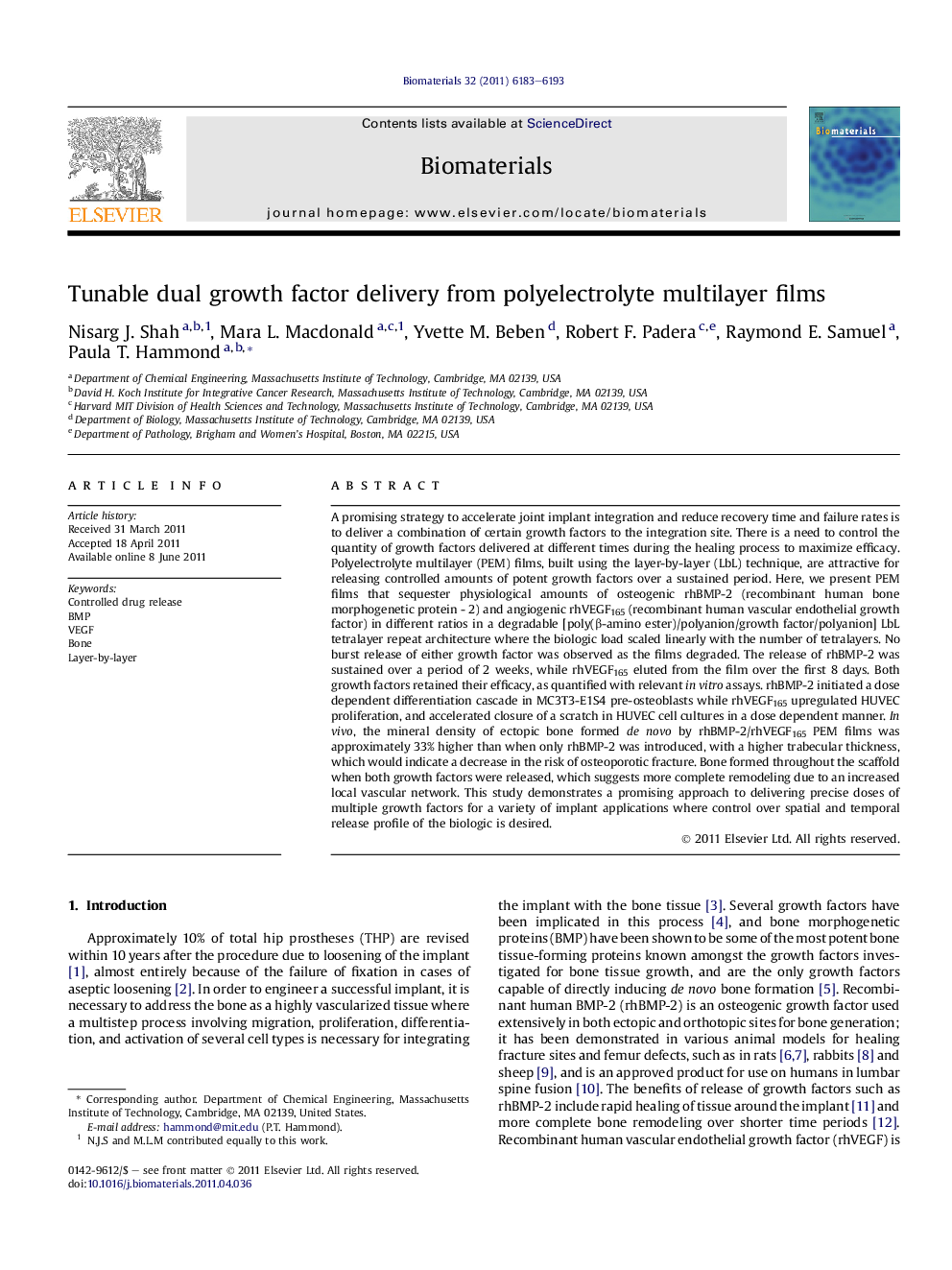| کد مقاله | کد نشریه | سال انتشار | مقاله انگلیسی | نسخه تمام متن |
|---|---|---|---|---|
| 7393 | 551 | 2011 | 11 صفحه PDF | دانلود رایگان |

A promising strategy to accelerate joint implant integration and reduce recovery time and failure rates is to deliver a combination of certain growth factors to the integration site. There is a need to control the quantity of growth factors delivered at different times during the healing process to maximize efficacy. Polyelectrolyte multilayer (PEM) films, built using the layer-by-layer (LbL) technique, are attractive for releasing controlled amounts of potent growth factors over a sustained period. Here, we present PEM films that sequester physiological amounts of osteogenic rhBMP-2 (recombinant human bone morphogenetic protein - 2) and angiogenic rhVEGF165 (recombinant human vascular endothelial growth factor) in different ratios in a degradable [poly(β-amino ester)/polyanion/growth factor/polyanion] LbL tetralayer repeat architecture where the biologic load scaled linearly with the number of tetralayers. No burst release of either growth factor was observed as the films degraded. The release of rhBMP-2 was sustained over a period of 2 weeks, while rhVEGF165 eluted from the film over the first 8 days. Both growth factors retained their efficacy, as quantified with relevant in vitro assays. rhBMP-2 initiated a dose dependent differentiation cascade in MC3T3-E1S4 pre-osteoblasts while rhVEGF165 upregulated HUVEC proliferation, and accelerated closure of a scratch in HUVEC cell cultures in a dose dependent manner. In vivo, the mineral density of ectopic bone formed de novo by rhBMP-2/rhVEGF165 PEM films was approximately 33% higher than when only rhBMP-2 was introduced, with a higher trabecular thickness, which would indicate a decrease in the risk of osteoporotic fracture. Bone formed throughout the scaffold when both growth factors were released, which suggests more complete remodeling due to an increased local vascular network. This study demonstrates a promising approach to delivering precise doses of multiple growth factors for a variety of implant applications where control over spatial and temporal release profile of the biologic is desired.
Journal: Biomaterials - Volume 32, Issue 26, September 2011, Pages 6183–6193